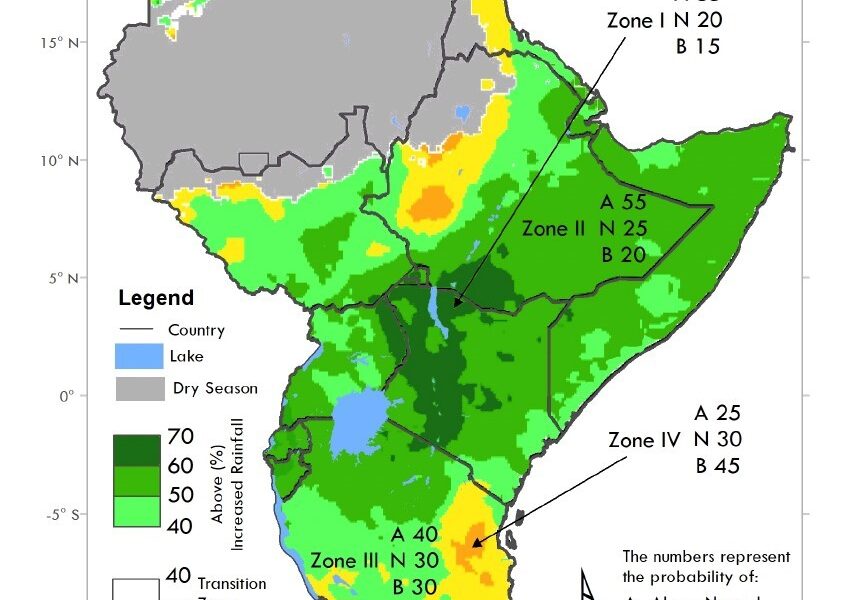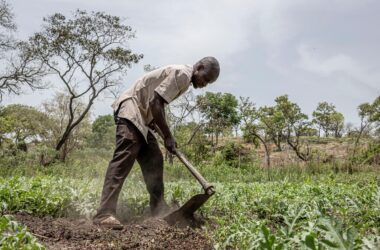By ’Dogga Morris Luwo
The IGAD Climate Prediction and Applications Centre (ICPAC) has released its March to May 2024 seasonal forecast, revealing a higher probability of wetter-than-normal conditions across most parts of the Greater Horn of Africa.
According to the forecast, several countries are expected to experience increased rainfall during this period. These include Kenya, Somalia, southern Ethiopia, South Sudan, Uganda, Burundi, Rwanda, and north-western Tanzania.
The areas with the highest probabilities for wetter conditions are central to western Kenya and the cross-border regions of Ethiopia, Kenya, and Uganda.
The anticipated enhanced rainfall is expected to have a positive impact on various sectors–agriculture, water resources, and livelihoods.
Agriculture is likely to benefit from the increased water supply, potentially boosting crop yields and improving food security in the region.
It further indicates that the onset of rainfall is expected to be early to normal in several parts of the region. These areas include parts of northern Tanzania, eastern Rwanda, southern and western Uganda, western Kenya, south-western Somalia, and parts of south-central Ethiopia.
This early onset of rainfall presents an opportunity for farmers to begin planting and taking advantage of the favourable conditions.
However, the forecast also raises concerns about the potential for flooding in flood-prone areas.
Dr. Guleid Artan, the director of ICPAC, highlights the increased risk due to the higher rainfall recorded in the months of October to December 2023 period and the forecast of wetter conditions from March to May.
“The forecast underscores the urgency for coordinated action and preparedness, emphasizing the need for proactive measures to mitigate potential impacts and capitalize on the opportunities presented by the forecasted rainfall. Let us unite in our commitment to leveraging climate information for resilient and sustainable development across our region,” he said.
Coordinated action and preparedness are crucial to mitigate the potential impacts of flooding and maximize the benefits of the forecasted rainfall.
Dr. Artan calls for proactive measures to be taken, emphasizing the importance of leveraging climate information for resilient and sustainable development in the region.
“While the food security situation may improve with wetter than usual conditions, it is important to remember the multiple challenges faced by the region, including the historic 2020-2022 drought, conflict in various parts of the region such as Sudan, and the El Nino-induced floods at the end of 2023.”
He says these factors have weakened the coping capacity of communities and made them highly susceptible to food insecurity.
“The likelihood of flooding during the 2024 MAM season in parts of the region could, therefore, lead to a deterioration in food security in localized areas,” he added.
In terms of temperatures, the forecast indicates an increased likelihood of warmer-than-normal surface temperatures across the entire region.
The probabilities for warmer conditions are particularly enhanced over Sudan, northern South Sudan, Ethiopia, Eritrea, Djibouti, Somalia, and southern parts of Tanzania, according to the forecast.
This could have implications for various sectors, including health, energy consumption, and water availability.
The objective seasonal forecast method was adopted in line with the World Meteorological Organization’s guidelines and recommendations, ICPAC said.
It added that the forecast utilised seasonal forecasts from nine Global Producing Centres (GPCs) and applied three calibration techniques to develop the MAM 2024 seasonal climate outlook.




